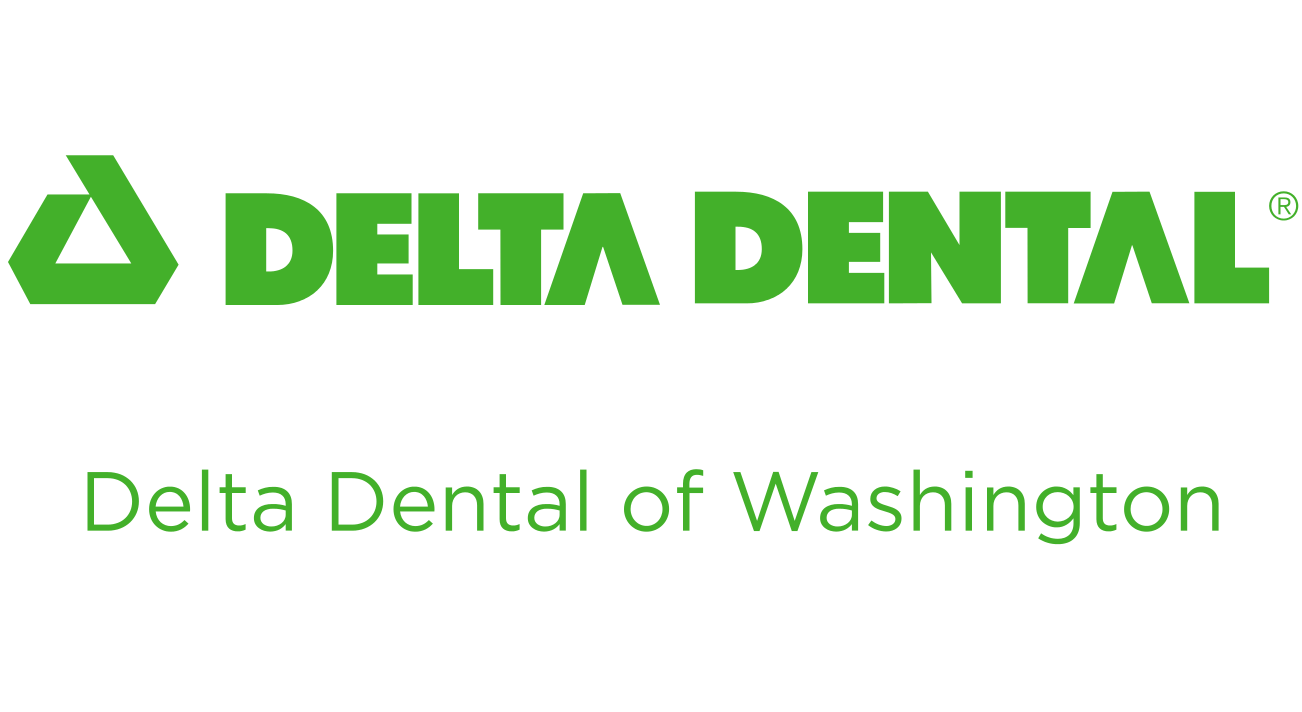Glossary
A guide to common dental benefits and oral health terminology.
Many of these are in your benefits booklet.
A
Abrasion
The abnormal wearing away of tooth substance by a mechanical process.
Abutment
The connection to a dental implant that supports a prosthetic crown.
Alveoloar bone
The bone surrounding the roots of teeth.
Amalgam
Common silver filling material comprised of modern materials that are an amalgamation (hence the name) or mixture of silver, tin, copper, mercury and sometimes zinc.
Analgesic
A mild remedy, such as aspirin, for relieving pain.
Anesthesia
Absence of pain sensation. Local anesthesia is used to numb a tooth; general anesthesia is used to render the patient unconscious.
Antimicrobial agents (also called site-specific therapy)
Food and Drug Administration (FDA) - approved antibiotics used to treat gum disease that are inserted into the space between the teeth and gums. These medications slowly release antibiotics - or antimicrobial agents - so they can remain at the site with the intent of suppressing or killing the bacteria that causes gum (periodontal) disease.
Apicoectomy
Surgical removal of the apex or tip of a root in order to remove diseased tissue.
Asymptomatic
No clinical symptoms of the disease in question.
Attrition
The normal loss of tooth substance resulting from friction caused by physiologic forces.
C
Caries
An infectious disease sometimes called "tooth decay" or "cavities."
Caries Susceptibility Test
A test done to determine how likely someone is to develop tooth decay. The test is usually done by measuring the concentration of certain bacteria in the mouth.
Class I
See Reimbursement levels.
Class II
See Reimbursement levels.
Class III
See Reimbursement levels.
Co-Insurance
The amount a person is responsible for paying toward the cost of his or her dental treatment after the insurance company has paid the predetermined percentage of the total treatment. Many dental insurance plans have a copayment policy.
Composite
A tooth-colored restorative material composed primarily of polymers (plastic) with filler materials composed of silica, quartz or ceramic particles.
Crown (Prosthetic)
A restoration that replaces the entire surface of the visible portion of the tooth.
D
Deductible
Most dental plans have a specific dollar deductible. It works like your car insurance deductible. During a benefit period, you will have to personally pay a portion of your dental bill before your insurance carrier will contribute to your bill. Your plan booklet will describe how your deductible works. Plans do vary on this point. For instance, some dental plans will apply the deductible to preventive treatments, and others will not.
Demineralization
The process of losing tooth structure.
Dentures
A set of artificial teeth that can be removed by the patient.
Desensitzing agents
Materials applied to teeth to reduce sensitivity for such reasons as temperature, touch, acids, biting, etc.
Dry mouth syndrome
Decrease in production of saliva (also called xerostomia).
E
F
Filed fees
The approved fees that participating Delta Dental member dentists have agreed to accept as total payment for the specific services performed.
Filling
Replacing lost tooth structure with a suitable restorative material such as amalgam or composite.
Fissure sealants
A material applied to the biting surfaces of teeth to prevent tooth decay.
Fluoride
A chemical agent applied to teeth to prevent cavities (tooth decay).
Fluoride varnish
A topical application of fluoride to prevent cavities in people who are at high risk for tooth decay. The fluoride varnish is painted on the teeth by a dental professional. The material stays on the teeth longer than regular fluoride treatment and works to strengthen enamel and help eliminate the bacteria that cause cavities.
I
Immediate denture
A removable dental prosthesis constructed for placement immediately after removal of the remaining natural teeth.
Implant (dental)
Artificial replacement for the natural tooth root of missing teeth. Dental implants are small metal posts that are surgically inserted into the bone of the jaw. Replacement teeth (or crowns) are then attached to the implant and provide the biting and cosmetic portion of the teeth.
Initial placement
The first delivery of a crown, fixed partial denture, or denture as opposed to a replacement.
Inlay
A dental restoration (filling) shaped in the form of a cavity and then inserted and secured with cement.
L
M
Malalignment
A less than ideal position of a tooth or teeth.
Maximum
The maximum dollar amount a dental plan will pay toward the cost of dental care within a specific benefit period. Most insurance plans have an annual dollar maximum. The patient is responsible for paying costs above the plan maximum.
Maximum allowable fee
The maximum dollar amount that will be allowed toward the reimbursement for any service provided for a covered dental benefit.
Micro-fractures
Very early fracture lines in teeth due to biting or grinding forces (also called "craze lines"). These "micro-fractures" are not associated with symptoms of discomfort or sensitivity.
Molars
The 12 back teeth in the entire mouth (or the three back teeth in each quarter of the mouth).
Morphology
The form or structure of an organism.
Mutans streptococci
A group of bacteria that live in the mouth's saliva and is the cause of tooth decay in humans.
N
Non-duplication of benefits
If you are covered by two programs (dual coverage), non-duplication of benefits is a term used to describe one of the ways the secondary carrier may calculate its portion of the payment. The secondary carrier calculates what it would have paid if it were the primary plan, and subtracts what the other plan paid. For example, if the primary carrier paid 80 percent, and the secondary carrier normally covers 80 percent as well, the secondary carrier would not make any additional payment. If the primary carrier paid 50 percent, however, the secondary carrier would pay up to 30 percent.
O
Occlusion
How the upper and lower teeth come together.
Osseous surgery
Osseous surgery is a surgical procedure that reshapes the bone that holds a tooth or teeth in place.
Overdenture
A complete or partial removable denture supported by retained roots or dental implants to provide improved support and stability.
Overhang
Excess filling material projecting beyond cavity margins.
P
Pathology
The branch of science that deals with disease.
Periodontal disease
Gum disease.
Periodontal maintenance
Treatment for preserving the state of health of the gums and bone surrounding and supporting the teeth.
Periodontal scaling/root planing
The removal of hard deposits, with metal scalers and curettes, on the root surfaces. The intent is to remove the diseased elements of the root surface, thereby permitting healing and potential reduction in depth of the periodontal pocket.
Periodontal splinting
The tying, ligating or joining of periodontally involved teeth to one another to stabilize and immobilize the teeth.
Periodontal surgery
Gum surgery that includes the treatment of the diseased teeth and their supporting structures.
Plaque
A soft, sticky substance that accumulates on teeth; it is composed largely of bacteria and food substances suspended in saliva.
Posterior
Situated behind or toward the rear.
Prophylaxis
Cleaning the teeth to prevent disease.
Prosthesis
An artificial replacement.
Pulp
The nerves, blood vessels, lymphatic and other cells inside a tooth.
Pulp exposure treatment
Treating the pulp or "nerve” that has been exposed in an attempt to promote healing and therefore make root canal treatment unnecessary.
R
Recontouring
The reshaping of any surface of a natural or artificial tooth.
Reimbursement levels
Many dental plans offer three classes of covered treatment. Each class provides specific types of treatment and typically covers those treatments at a certain percentage. Class I procedures are typically diagnostic and preventive, and are usually covered at the highest level to encourage patients to seek preventive care. Class II includes basic procedures — such as fillings and extractions — which are reimbursed at a slightly lower percentage. Class III is for major procedures — such as crowns and dentures — which are reimbursed at yet a lower percentage.
Reline
To resurface the tissue side of a denture with new material so that it will fit more accurately.
Remineralization
The process whereby calcium, fluoride and an antimicrobial mouth rinse are combined to reduce the bacteria and bond with the tooth to strengthen and rebuild the enamel. Remineralization helps reduce the likelihood of needing to have a tooth filled.
Restoration
The replacement part or portion restored on a damaged tooth (filling).
Root canal therapy (R.C.T.)
The pulp or nerve of the tooth is removed from the canal inside the root and replaced with an inert filling material.
S
Scaling
The removal of the hard deposits on teeth called calculus or tartar.
Sealant
See "Fissure Sealant."
Seat date
The date a crown, veneer, inlay, only or bridge is actually cemented into place or the date a removable prosthesis is delivered.
T
V






